NEARLY 75 YEARS AGO, THE DUST BOWL offered farmers here a valuable lesson: if their tillage practices failed to leave the soil covered, it would be lost forever. Today, most farmers in this region still grow cycles of wheat and fallow… essentially resting their soil for an entire year after each harvest to give it time to collect enough rainwater to produce another crop. While this wheat-fallow rotation helps farmers keep wheat yields consistent from year to year, it also requires leaving the soil bare for up to 14 months at a time. That bare soil is subject to both wind and water erosion, and loses nearly 75% of its water storage to evaporation and weeds.
Lexicon of Sustainability worked with scientists at Colorado State University and farmers across Colorado and Nebraska to produce RESILIENT, an education initiative that documents the stories of dryland farmers abandoning tradition in favor of more regenerative farming practices. Much of their inspiration comes from observing the efficient water-uses strategy of native grasses growing in the shortgrass prairie. They’ve learned to work with less water while building healthier soils, and to mimic nature by incorporating extensive crop rotations that enhance biodiversity. They also plant cover crops to keep the soil covered and increase soil organic matter while applying no-till farming practices.
In a time of increasing climate uncertainty, RESILIENCE provides farmers with a model for responding to a region’s specific challenges with adaptive strategies to help them reach their production goals not just today, but for generations to come.
WHILE THE BLUE GRAMA IS THE DOMINANT and most drought-adapted grass in the shortgrass prairie, its understory is mixed with cool season grasses that adapt to a wide range of climatic conditions. Meanwhile, up to 90% of the biomass here is belowground, like an iceberg, allowing it to sequester huge amounts of carbon. By understanding how nature creates resilience, dryland farmers can use same diversity primciple to grow more food and stay in business whilefarming in the most variable climate in the country.
EASTERN COLORADO’S DRYLAND FARMERS never know when the next rain will come, so it’s important to grow a diversity of crops at different times of the year. In the High Plains, dryland farmers are constantly worried about drought. Instead of planting the region’s traditional wheat-fallow cropping sequence, farmers use more diverse crop rotations that break up weed and disease cycles, grow more food, make more money, sequester more carbon, and keep plants growing at different times of year to cope with the uncertainty of rain.
Dryland farmers in the high plains like John Heerman build healthy soil by using NO TILL practices and growing a DIVERSITY of plants, including COVER CROPS. While the typical wheat-fallow farming practices in this region result in one crop every two years, a new breed of dryland farmers experiments by growing a diverse mix of crops throughout the year. Instead of rotating between wheat and fallow, John incorporates cover crops into his rotation. They include kale, forage collards, grazing corn, cow peas, soybeans and vetch. When coupled with no-till practices, these farmers see benefits from a healthier soil ecosystem, one that captures and retains water, suppresses disease and pests, cycles nutrients, improves soil structure, and filters pollutants. Meanwhile, John’s neighbor tills his soil to control weeds, then leaves his soil bare for 14 months after each wheat harvest to recharge it’s store of water (absence of living plants in the soil means less for soil organisms to feed on).
In eastern Colorado, dryland farmers are introducing new practices that preserve top soil, conserve soil moisture, and build soil health. After each harvest, crop residue is left on the ground. It protects the soil from the erosive forces of wind and rain, and shades it from the sun. This blanket of crop residue is important; it can take hundreds of years to create a single inch of top soil. The residue also provides a natural buffer against the impact of raindrops and increases the total amount of water stored within a plant’s root zone. And with a no till system, corn is even planted directly into the crop residue, which provides nutrients while keeping soil exposure to a minimum.
We don’t really know in 50 years what this soil might be capable of,” Cole observes, “It’s a long healing process. Generations of tilled wheat-fallow degraded the soil, but that’s being reversed as no-till practices revolutionize dryland agriculture. Cole’s family is on the forefront of this change and they’re excited to seehow much the soil will improve over their lifetimes.
The high plains once grazed by migratory bison featured a diverse mix of perennial and annual plants. “When you have diversity in a cropping system,” Curt observes, “You keep the weeds and bugs off balance. I used to think these plants would compete but we’re finding now that they actually work in conjunction with each other. Some plants make nitrogen available and some plants make phosphorus available and some plants are better at retaining moisture. That diversity helps them all survive.
“To get the soil biology right, you have to have diversity above ground if you want diversity below ground. So, we have crop diversity, but the component that we’ve been missing is the livestock. it’s much more than just urine and feces. It’s the way their hooves interact with the soil and when they graze off a plant but don’t kill it, so the exudates are going out of the roots. Bison used to migrate in massive and dense herds, only eating the tops of their favorite plants as they went. By keeping our cattle at high densities and frequently moving them between fresh cover crop patches, they eat only a small amount of the total plant biomass. This allows the plants to regrow and benefit the soil, while also providing the cattle with a tasty and nutritious diet. All of these things stimulate the soil biology more than just the nitrogen and phosphorous that might be in the manure.”
THE WESTERN GREAT PLAINS HAVE AN AMAZING CLIMATE”, Nolan says. “It’s the part of the country that has the largest year-to-year and day-to-day changes of almost any other part of the country. It’s an area of natural extremes to begin with, and that’s even before you add the next ingredient, which is climate change in action.”
Farmers in the High Plains depend on rainfall that averages less than 16”per year. While the effects of climate change are difficult to measure in this region, Nolan notes, “Anything that causes warmer weather with possibly fewer and larger precipitation events and possibly quicker onset drought – will require different approaches to how [farmers] manage the biological resources in [their] soil.
“Agriculture can affect not only how they respond to the climate as it may be changing but also how the atmosphere’s composition of carbon may in fact change over time as well. Agricultural practices can influence both sides of the climate system.” These practices can include both no-till and and reducing fallow periods in crop rotations to sequester carbon.”
CSU Colorado Springs
State Climatologist
fo Colorado
THE LEXICON COLLABORATES with government agencies, universities, foundations, television networks, publishers, non-profits, community organizers and sustainability advocates from around the world. Our primary tool is language. Our award-winning multi-stakeholder approach blends data with aspirational stories of real people sharing sustainable solutions that drive behavior change.
By illuminating the meanings behind these powerful ideas, we help people pay closer attention to how they eat, what they buy, and where their responsibility begins for creating a healthier, safer food system.
It’s behavior change that works on a local and regional level to transform communities and shift the marketplace.
Follow our latest activities and learn more about how you can take part in your own community.
Our work depends on contributions by people like you. If you like what you see, you can support us here!
We’d love to hear from you! Contact us with general questions or media requests.
This website was built by The Lexicon™, a 501(c)(3) tax-exempt nonprofit organization headquartered in Petaluma, CA.
Check out our Privacy Policy, Cookie Policy, and Terms of Use.
© 2023 – The Lexicon™
This game was designed to raise awareness about the impacts our food choices have on our own health, but also the environment, climate change and the cultures in which we live.
First, you can choose one of the four global regions and pick a character that you want to play.
Each region has distinct cultural, economic, historical, and agricultural capacities to feed itself, and each character faces different challenges, such as varied access to food, higher or lower family income, and food literacy.
As you take your character through their day, select the choices you think they might make given their situation.
At the end of the day you will get a report on the impact of your food choices on five areas: health, healthcare, climate, environment and culture. Take some time to read through them. Now go back and try again. Can you make improvements in all five areas? Did one area score higher, but another score lower?
FOOD CHOICES FOR A HEALTHY PLANET will help you better understand how all these regions and characters’ particularities can influence our food choices, and how our food choices can impact our personal health, national healthcare, environment, climate, and culture. Let’s Play!
The FOOD CHOICES FOR A HEALTHY PLANET game allows users to experience the dramatic connections between food and climate in a unique and engaging way. The venue and the game set-up provides attendees with a fun experience, with a potential to add a new layer of storytelling about this topic.
Starting the game: the pilot version of the game features four country/regions: Each reflects a different way people (and the national dietary guidelines) look at diets: Nordic Countries (sustainability), Brazil (local and whole foods instead of ultra-processed foods); Canada (plant-forward), and Indonesia (developing countries).
Personalizing the game: players begin by choosing a country and then a character who they help in making food choices over the course of one day. Later versions may allow for creating custom avatars.
Making tough food choices: This interactive game for all ages shows how the food choices we make impact our health and the environment, and even contribute to climate change.
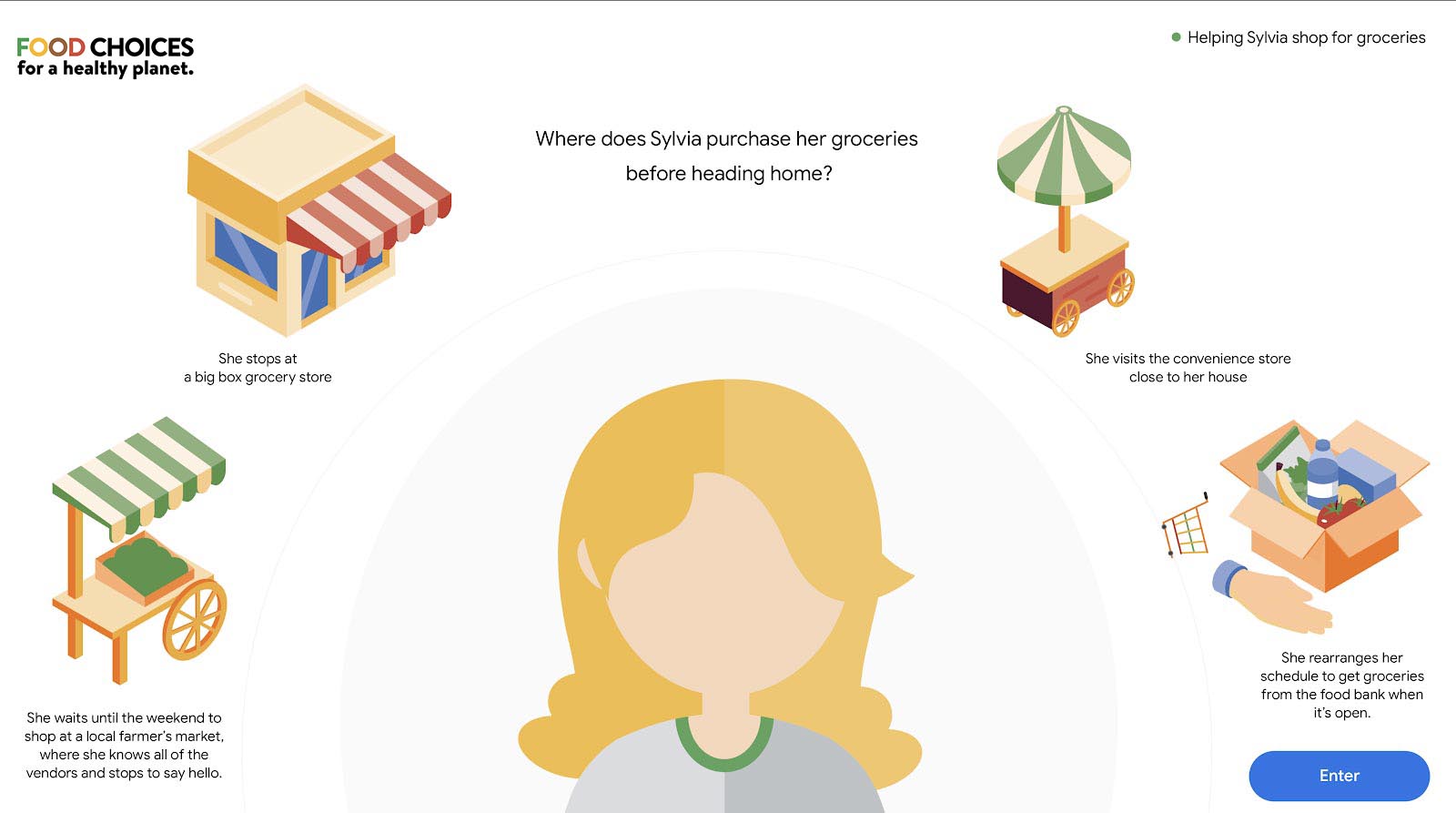
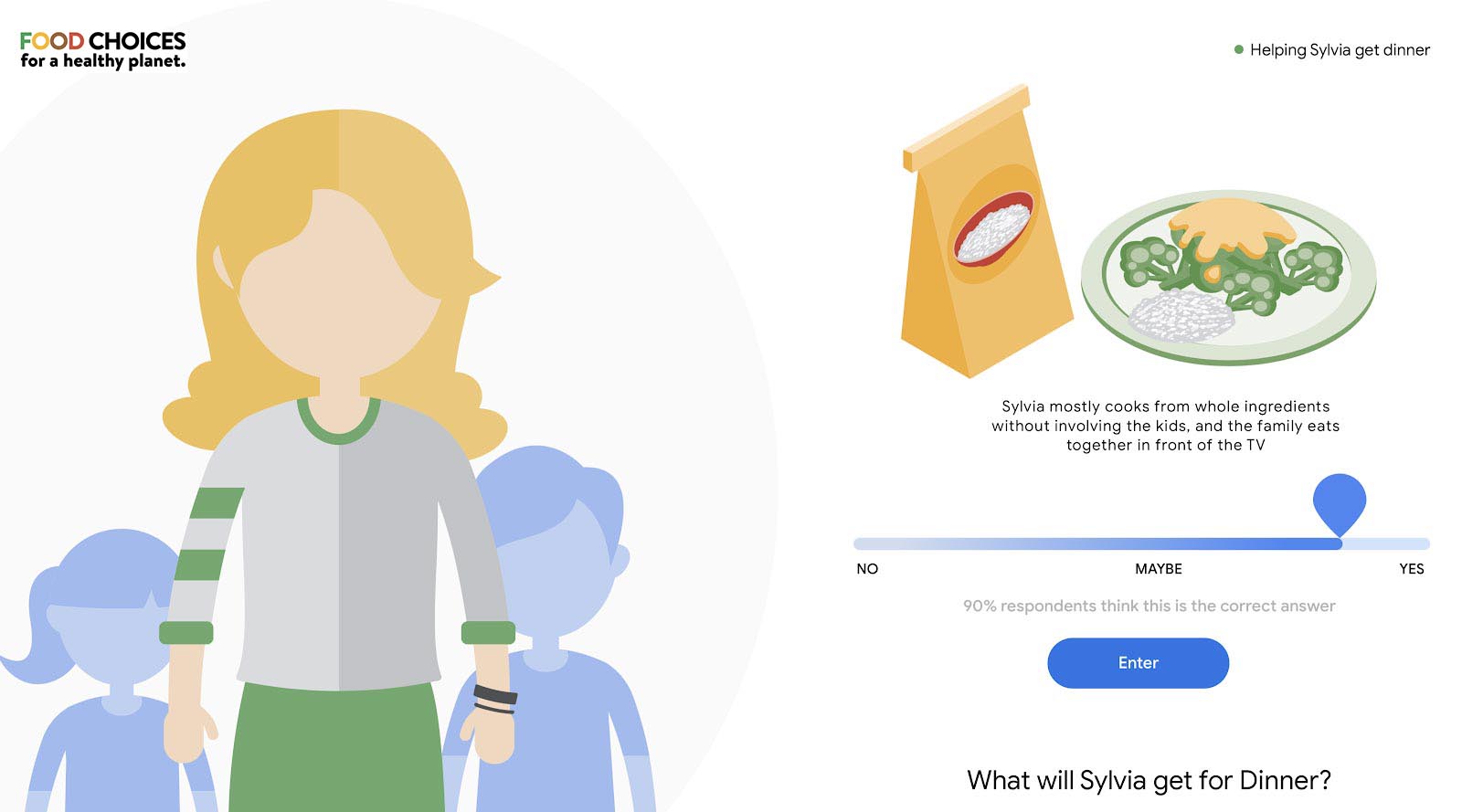
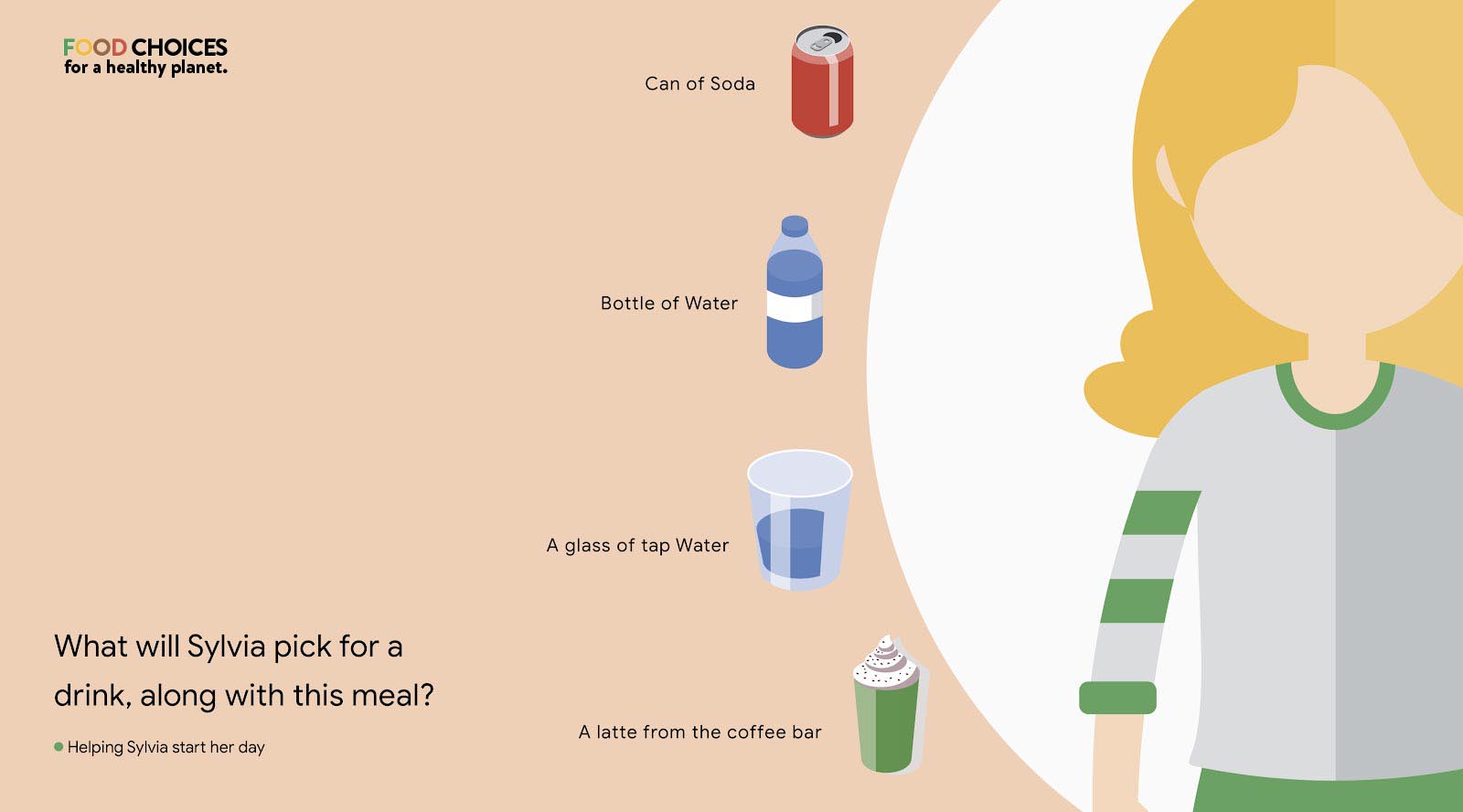
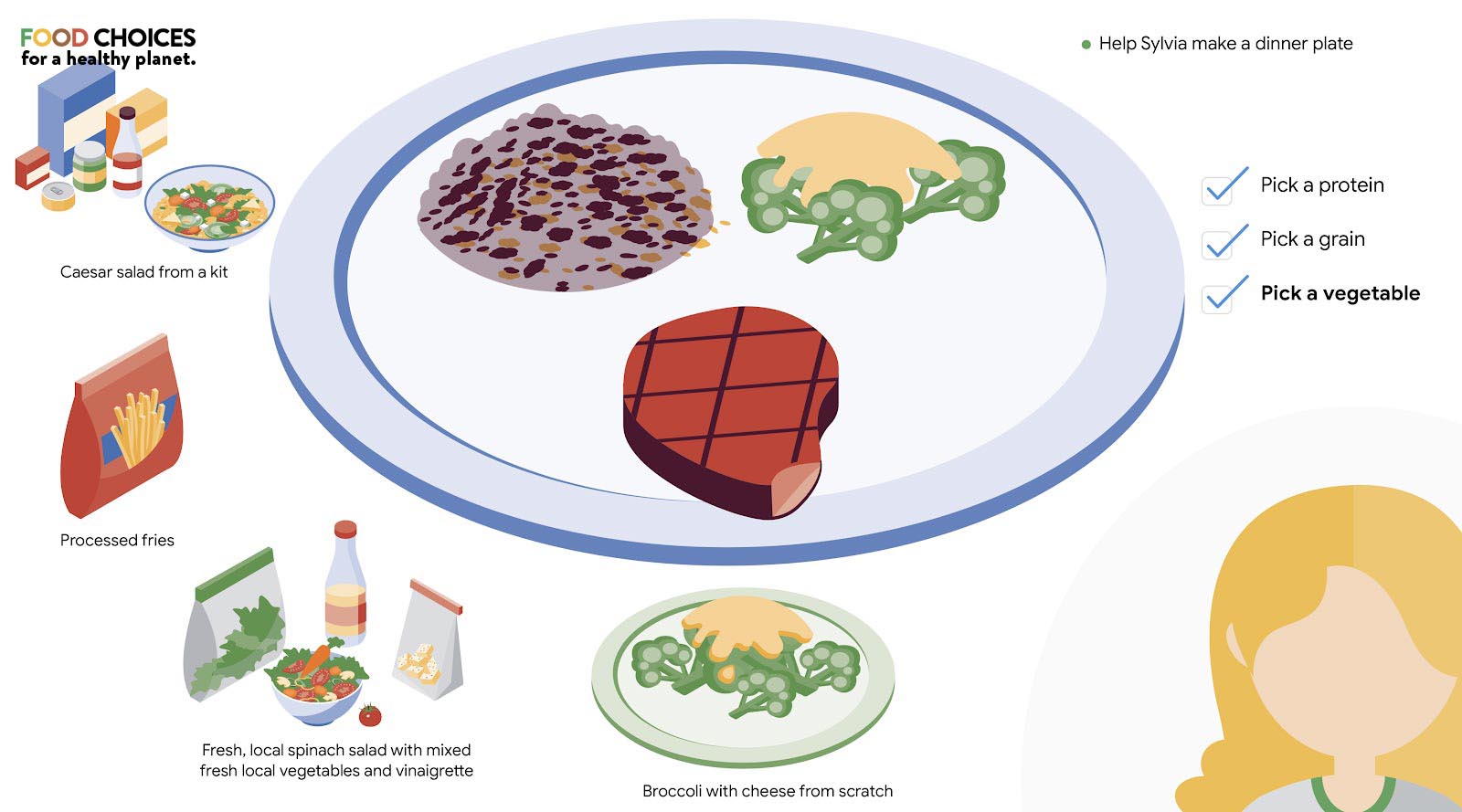
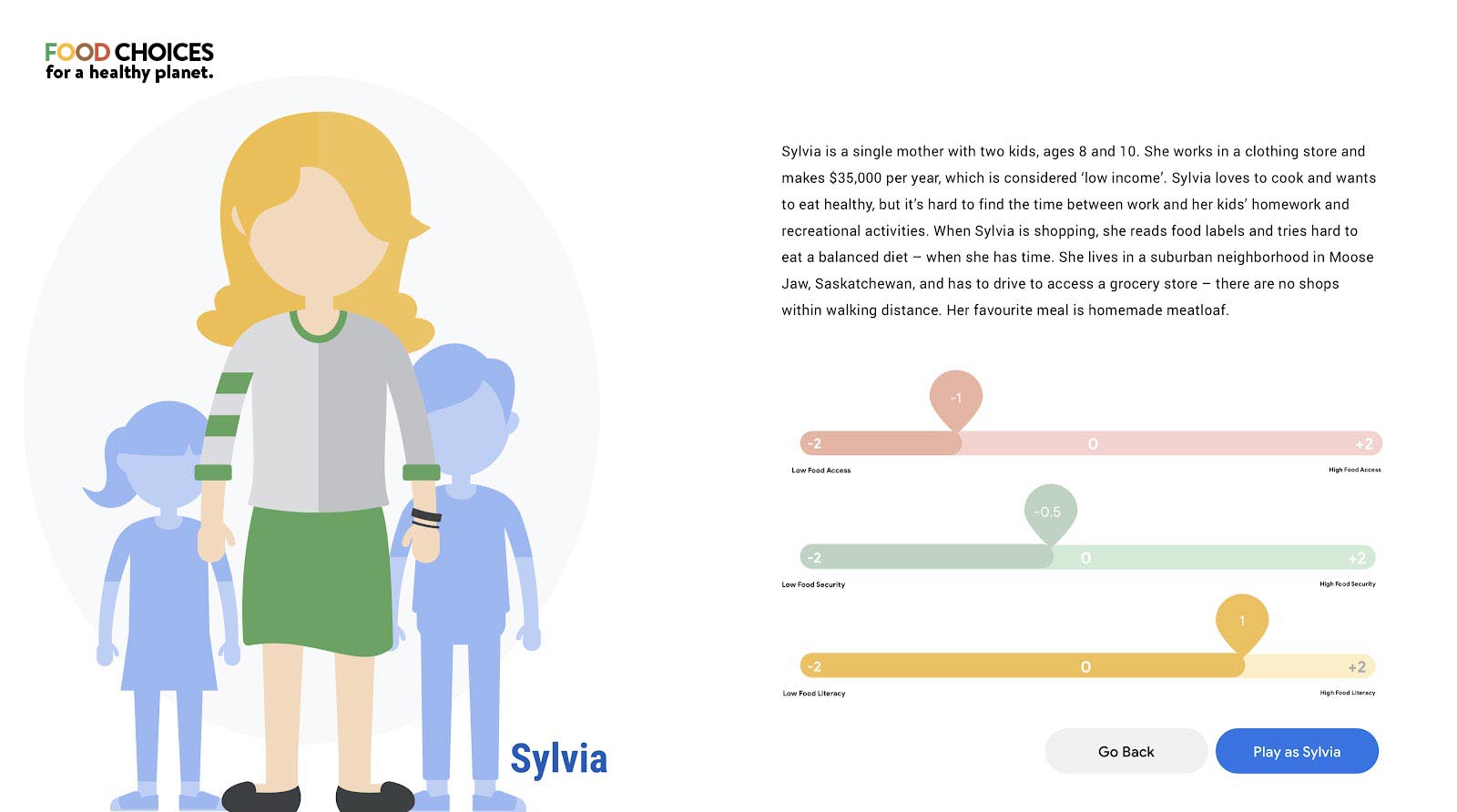
What we eat matters: at the end of each game, players learn that every decision they make impacts not only their health, but a national healthcare system, the environment, climate and even culture.
We’d love to know more about you and why you think you will be a great fit for this position! Shoot us an email introducing you and we’ll get back to you as soon as possible!
Providing best water quality conditions to ensure optimal living condition for growth, breeding and other physiological needs
Water quality is sourced from natural seawater with dependency on the tidal system. Water is treated to adjust pH and alkalinity before stocking.
Producers that own and manages the farm operating under small-scale farming model with limited input, investment which leads to low to medium production yield
All 1,149 of our farmers in both regencies are smallholder farmers who operate with low stocking density, traditional ponds, and no use of any other intensification technology.
Safe working conditions — cleanliness, lighting, equipment, paid overtime, hazard safety, etc. — happen when businesses conduct workplace safety audits and invest in the wellbeing of their employees
Company ensure implementation of safe working conditions by applying representative of workers to health and safety and conduct regular health and safety training. The practices are proven by ASIC standards’ implementation
Implementation of farming operations, management and trading that impact positively to community wellbeing and sustainable better way of living
The company works with local stakeholders and local governments to create support for farmers and the farming community in increasing resilience. Our farming community is empowered by local stakeholders continuously to maintain a long generation of farmers.
Freezing seafood rapidly when it is at peak freshness to ensure a higher quality and longer lasting product
Our harvests are immediately frozen with ice flakes in layers in cool boxes. Boxes are equipped with paper records and coding for traceability. We ensure that our harvests are processed with the utmost care at <-18 degrees Celsius.
Sourcing plant based ingredients, like soy, from producers that do not destroy forests to increase their growing area and produce fish feed ingredients
With adjacent locations to mangroves and coastal areas, our farmers and company are committed to no deforestation at any scale. Mangrove rehabilitation and replantation are conducted every year in collaboration with local authorities. Our farms are not established in protected habitats and have not resulted from deforestation activity since the beginning of our establishment.
Implement only natural feeds grown in water for aquatic animal’s feed without use of commercial feed
Our black tiger shrimps are not fed using commercial feed. The system is zero input and depends fully on natural feed grown in the pond. Our farmers use organic fertilizer and probiotics to enhance the water quality.
Enhance biodiversity through integration of nature conservation and food production without negative impact to surrounding ecosysytem
As our practices are natural, organic, and zero input, farms coexist with surrounding biodiversity which increases the volume of polyculture and mangrove coverage area. Farmers’ groups, along with the company, conduct regular benthic assessments, river cleaning, and mangrove planting.
THE TERM “MOONSHOT” IS OFTEN USED TO DESCRIBE an initiative that goes beyond the confines of the present by transforming our greatest aspirations into reality, but the story of a moonshot isn’t that of a single rocket. In fact, the Apollo program that put Neil Armstrong on the moon was actually preceded by the Gemini program, which in a two-year span rapidly put ten rockets into space. This “accelerated” process — with a new mission nearly every 2-3 months — allowed NASA to rapidly iterate, validate their findings and learn from their mistakes. Telemetry. Propulsion. Re-entry. Each mission helped NASA build and test a new piece of the puzzle.
The program also had its fair share of creative challenges, especially at the outset, as the urgency of the task at hand required that the roadmap for getting to the moon be written in parallel with the rapid pace of Gemini missions. Through it all, the NASA teams never lost sight of their ultimate goal, and the teams finally aligned on their shared responsibilities. Within three years of Gemini’s conclusion, a man did walk on the moon.
FACT is a food systems solutions activator that assesses the current food landscape, engages with key influencers, identifies trends, surveys innovative work and creates greater visibility for ideas and practices with the potential to shift key food and agricultural paradigms.
Each activator focuses on a single moonshot; instead of producing white papers, policy briefs or peer-reviewed articles, these teams design and implement blueprints for action. At the end of each activator, their work is released to the public and open-sourced.
As with any rapid iteration process, many of our activators re-assess their initial plans and pivot to address new challenges along the way. Still, one thing has remained constant: their conviction that by working together and pooling their knowledge and resources, they can create a multiplier effect to more rapidly activate change.
Co-Founder
THE LEXICON
Vice President
Global Workplace Programs
GOOGLE
Who can enter and how selections are made.
A Greener Blue is a global call to action that is open to individuals and teams from all over the world. Below is a non-exhaustive list of subjects the initiative targets.
To apply, prospective participants will need to fill out the form on the website, by filling out each part of it. Applications left incomplete or containing information that is not complete enough will receive a low score and have less chance of being admitted to the storytelling lab.
Nonprofit organizations, communities of fishers and fish farmers and companies that are seeking a closer partnership or special support can also apply by contacting hello@thelexicon.org and interacting with the members of our team.
Special attention will be given to the section of the form regarding the stories that the applicants want to tell and the reasons for participating. All proposals for stories regarding small-scale or artisanal fishers or aquaculturists, communities of artisanal fishers or aquaculturists, and workers in different steps of the seafood value chain will be considered.
Stories should show the important role that these figures play in building a more sustainable seafood system. To help with this narrative, the initiative has identified 10 principles that define a more sustainable seafood system. These can be viewed on the initiative’s website and they state:
Seafood is sustainable when:
Proposed stories should show one or more of these principles in practice.
Applications are open from the 28th of June to the 15th of August 2022. There will be 50 selected applicants who will be granted access to The Lexicon’s Total Storytelling Lab. These 50 applicants will be asked to accept and sign a learning agreement and acceptance of participation document with which they agree to respect The Lexicon’s code of conduct.
The first part of the lab will take place online between August the 22nd and August the 26th and focus on training participants on the foundation of storytelling, supporting them to create a production plan, and aligning all of them around a shared vision.
Based on their motivation, quality of the story, geography, and participation in the online Lab, a selected group of participants will be gifted a GoPro camera offered to the program by GoPro For A Change. Participants who are selected to receive the GoPro camera will need to sign an acceptance and usage agreement.
The second part of the Storytelling Lab will consist of a production period in which each participant will be supported in the production of their own story. This period goes from August 26th to October 13th. Each participant will have the opportunity to access special mentorship from an international network of storytellers and seafood experts who will help them build their story. The Lexicon also provides editors, animators, and graphic designers to support participants with more technical skills.
The final deadline to submit the stories is the 14th of October. Participants will be able to both submit complete edited stories, or footage accompanied by a storyboard to be assembled by The Lexicon’s team.
All applicants who will exhibit conduct and behavior that is contrary to The Lexicon’s code of conduct will be automatically disqualified. This includes applicants proposing stories that openly discriminate against a social or ethnic group, advocate for a political group, incite violence against any group, or incite to commit crimes of any kind.
All submissions must be the entrant’s original work. Submissions must not infringe upon the trademark, copyright, moral rights, intellectual rights, or rights of privacy of any entity or person.
Participants will retain the copyrights to their work while also granting access to The Lexicon and the other partners of the initiative to share their contributions as part of A Greener Blue Global Storytelling Initiative.
If a potential selected applicant cannot be reached by the team of the Initiative within three (3) working days, using the contact information provided at the time of entry, or if the communication is returned as undeliverable, that potential participant shall forfeit.
Selected applicants will be granted access to an advanced Storytelling Lab taught and facilitated by Douglas Gayeton, award-winning storyteller and information architect, co-founder of The Lexicon. In this course, participants will learn new techniques that will improve their storytelling skills and be able to better communicate their work with a global audience. This skill includes (but is not limited to) how to build a production plan for a documentary, how to find and interact with subjects, and how to shoot a short documentary.
Twenty of the participants will receive a GoPro Hero 11 Digital Video and Audio Cameras by September 15, 2022. Additional participants may receive GoPro Digital Video and Audio Cameras to be announced at a later date. The recipients will be selected by advisors to the program and will be based on selection criteria (see below) on proposals by Storytelling Lab participants. The selections will keep in accordance with Lab criteria concerning geography, active participation in the Storytelling Lab and commitment to the creation of a story for the Initiative, a GoPro Camera to use to complete the storytelling lab and document their story. These recipients will be asked to sign an acceptance letter with terms of use and condition to receive the camera.
The Lexicon provides video editors, graphic designers, and animators to support the participants to complete their stories.
The submitted stories will be showcased during international and local events, starting from the closing event of the International Year of Fisheries and Aquaculture 2022 in Rome, in January 2023. The authors of the stories will be credited and may be invited to join.
Storytelling lab participation:
Applicants that will be granted access to the storytelling Lab will be evaluated based on the entries they provided in the online form, and in particular:
Applications will be evaluated by a team of 4 judges from The Lexicon, GSSI and the team of IYAFA (Selection committee).
When selecting applications, the call promoters may request additional documentation or interviews both for the purpose of verifying compliance with eligibility requirements and to facilitate proposal evaluation.
Camera recipients:
Participants to the Storytelling Lab who will be given a GoPro camera will be selected based on:
The evaluation will be carried out by a team of 4 judges from The Lexicon, GSSI and the team of IYAFA (Selection committee).
Incidental expenses and all other costs and expenses which are not specifically listed in these Official Rules but which may be associated with the acceptance, receipt and use of the Storytelling Lab and the camera are solely the responsibility of the respective participants and are not covered by The Lexicon or any of the A Greener Blue partners.
All participants who receive a Camera are required to sign an agreement allowing GoPro for a Cause, The Lexicon and GSSI to utilize the films for A Greener Blue and their promotional purposes. All participants will be required to an agreement to upload their footage into the shared drive of The Lexicon and make the stories, films and images available for The Lexicon and the promoting partners of A Greener Blue.